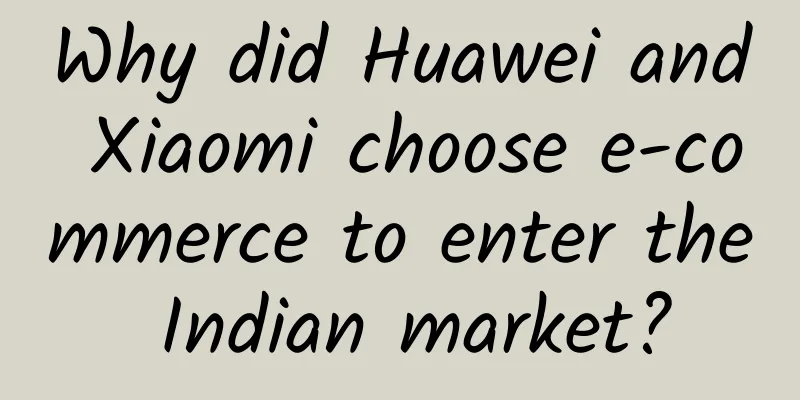Reshuffle in the mobile phone industry? Apple stands firm, Honor rises, Xiaomi declines

|
The landscape of China's mobile phone market is being reshuffled.
On December 13, data released by the China Academy of Information and Communications Technology showed that from January to November 2021, the total shipments of mobile phones in the domestic market reached 317 million units, a year-on-year increase of 12.8%. Among them, the shipments of 5G mobile phones reached 239 million units, a year-on-year increase of 65.3%, accounting for 75.3% of the mobile phone shipments in the same period. At the beginning of this year, domestic brands were gearing up to seize the high-end market. After all, Huawei's lack of chips left a big piece of the pie. But throughout the year, OPPO and vivo made steady progress, and their high-end market share was still relatively small. In fact, the rise of Honor in the second half of the year dealt a certain blow to Xiaomi. Most of the high-end market share that everyone wanted was taken by Apple, which successfully topped the list at the end of the year. Apple benefits the most from the high-end competitionAs the mobile phone market is no longer growing, the incremental market has become a stock market, and the transformation to high-end has become an inevitable choice for all mobile phone companies. In addition to Huawei's success in the high-end mobile phone market in recent years, major local mobile phone companies such as OPPO, vivo, and Xiaomi are all planning to seize the high-end market. Before the rise of Huawei, domestic mobile phone brand OPPO has always been the "boss" in the Chinese market. In September this year, Liu Bo, vice president of OPPO and president of China, made it clear at the press conference that OPPO has made preparations in technology, organization, OS, and ecology, "In this high-end marathon, we will definitely be able to take the top three." In fact, OPPO has also made many preparations for the layout of the high-end market. Liu Bo said that in terms of technology, OPPO continues to explore technologies such as imaging and fast charging, and will implement more innovative technologies in the future; in terms of architecture, the OPPO and OnePlus teams are fully integrated to form a dual-brand dual-flagship combination to impact the high-end market; the role of ColorOS will also be transformed into an operating system for all OPPO smart terminals, bringing users a unified high-end experience. In 2021, OPPO's architecture changed the most. OnePlus returned and adopted a unified operating system. On the one hand, it was to expand the ecosystem of smart hardware, and on the other hand, to seize the high-end mobile phone market with OPPO and OnePlus dual flagships. Vivo has also made many moves in the high-end market. In August this year, Vivo launched its first self-developed imaging chip to strengthen the competitiveness of its mobile phones in the imaging field. On August 27, Hu Bashan, executive vice president and chief operating officer of vivo, said in an interview with a reporter from The Paper in Shenzhen that there is little differentiation in SoC chips now, but there is a strong demand for customized chips in the core track. Based on insights into future technologies and consumer needs, vivo has determined that the self-developed chip V1 will be mainly used in the imaging track. Xiaomi has clearly stated that it will impact the high-end market in 2020. Since the beginning of this year, Xiaomi has also released a number of high-end flagship phones, continuing to maintain its position in the high-end market. Xiaomi's high-end flagship phone Xiaomi 11 Ultra is known as the "Light of Android"; the folding phone Xiaomi MIX Fold is equipped with Xiaomi's first self-developed professional imaging chip Pengpai C1. Although all companies have launched high-end products, no high-end phenomenal product has appeared, which has led to the failure of local mobile phone companies to impact the high-end market throughout the year. When the iPhone 13 series was released, it easily led Apple to the top. According to Canalys data, Apple's share of high-end smartphones priced above 5,000 yuan in the Chinese market reached 67% from January to August 2021. In September, Apple released the latest iPhone 13 series, which drove Apple's sales to increase by 32.5% month-on-month in the month of its launch, making it the only mainstream brand with positive sales growth. In October this year, data from multiple market institutions showed that Apple's iPhone saw a significant increase both month-on-month and year-on-year, standing out in the sluggish mobile phone market and returning to the top spot after many years. According to Canalys' report: In October, Apple's iPhone sales were 6.5 million units, a year-on-year increase of 155%; OPPO's sales were 4.3 million units, a year-on-year decrease of 2.5%; vivo's sales were 4 million units, a year-on-year decrease of 3%; Honor's sales were 3.6 million units, a slight increase of 0.6% year-on-year; Xiaomi's sales were 2.8 million units, a decrease of 25.8%. Ni Fei, president of ZTE's terminal business unit, told a reporter from The Paper that entering the high-end market cannot be achieved overnight. It requires comprehensive improvements in all aspects, including products, brands, and channels, and it needs to be done step by step. "In fact, both the Android camp and the Apple camp have their own strengths. There are many brands in the Android camp, and the competition and innovation among them are more colorful. The openness of the Android camp actually brings more dynamic innovation." Ni Fei believes that in the past two years, domestic manufacturers have an advantage over Apple in the ability to quickly iterate many technologies, and the Android camp still has many opportunities in the future. Honor CEO Zhao Ming also said in an interview with The Paper recently that the path Huawei has taken has provided a good reference for everyone. Huawei's success lies in returning to basic innovation and constantly making breakthroughs in technology and consumer experience. "There are no shortcuts or luck in building and growing high-end brands. We need to return to the basics of consumer experience. We cannot regard configuration as a brand, nor can we regard innovation by piecing together various high-end devices. This idea is completely wrong. If we do not return to the basics and simply say that the market vacated by Huawei should be divided up by several domestic brands, it is very naive and naive. The market will never tolerate any naivety and naivety." Canalys' analysis shows that Apple has become the biggest beneficiary in the domestic high-end market in terms of total market share. Although domestic brands such as Xiaomi, OV, etc. have successively made efforts to impact the high-end market and seize Huawei's market share, unfortunately, their share changes above 5,000 yuan are still relatively low, and there is still a long way to go on the road to the high-end market. Honor’s rise and Xiaomi’s market declineA major highlight of the market in the second half of this year is that the independent Honor brand's market share has recovered rapidly and returned to the top three in the market. According to the report of Sino, after the adjustment in the first half of the year, Honor has achieved positive growth for two consecutive months from July and August. Although it declined in September, it turned positive year-on-year. It has ranked third in the domestic smartphone sales ranking for three consecutive months. In the third quarter, Honor achieved a quarter-on-quarter growth of 113% with sales of about 12 million units, mainly contributed by the Honor 50 series and Magic 3 series. The rise of Honor does not have a big impact on OV. Canalys data shows that in the third quarter of 2021, the smartphone manufacturer with the largest shipments in the Chinese market was vivo, with a market share of 23% and a year-on-year shipment growth of 19%. OPPO ranked second, accounting for 20%, a year-on-year increase of 15%. Honor's shipments grew rapidly in the quarter, accounting for 18%, ranking third, surpassing Xiaomi and Apple. In addition, Xiaomi and Apple ranked fourth and fifth with a market share of 14% and 11% respectively. Whether they admit it or not, Honor and Xiaomi have a very direct competitive relationship. Now Honor's return still poses a certain impact on Xiaomi. Xiaomi's performance was sluggish in the second half of this year. Although Xiaomi's MIX 4 series returned to the market, its sales in September fell 12.3% month-on-month. Looking at the overall data for the third quarter, Xiaomi's sales of about 11 million mobile phones fell 10.2% month-on-month. Recently, when Zhao Ming was interviewed after the Honor 60 series launch conference, he did not directly respond to the competitive relationship with Xiaomi. He said that after the third quarter of this year, Honor no longer particularly valued market share, and Honor internally rarely mentioned market share data. He still hoped that the entire team could return to the fundamentals of business and work hard to consolidate products and services to better meet consumer needs. "When you make a good product and provide a good consumer experience, any market share is possible. When you focus too much on market share and work only for market share, at the behavioral level, you end up doing the opposite of what you should be doing, resulting in distorted actions. We have seen many such examples in the past," said Zhao Ming. |
>>: iOS 15.2 is here! Lots of new features, check it out!
Recommend
How much does it cost to develop a photo app in Shangrao?
Shangrao photo applet development price 1. Displa...
Do you know the first river in our country named after a poem?
Qishui soup, Gradually the carriage curtains and ...
How to predict user churn rate and make strategies in advance?
The user churn rate directly reflects the market ...
Rags and sweaters alert! Are humans powerless against moths that eat sweaters?
Leviathan Press: It’s hard to have a favorable op...
How to place advertisements on Toutiao?
Since last year, a word has become particularly p...
When Jing Haipeng met the Swiss astronaut, he told a "tearful" story
Why can't Chinese astronaut Jing Haipeng cry ...
Why can’t seawater extinguish submarine volcanoes?
In 1963, a volcano 130 meters below the sea surfa...
Is there any difference between Google optimization and Baidu optimization? How to do Google SEO well?
Why is my SEO promotion not effective? This is th...
DSP advertising skills and precautions!
1. Advertising skills When collecting knowledge a...
Pinduoduo’s addictive cash withdrawal activity, I have summarized these four major gameplay designs!
In the past two days, I participated in the Pindu...
Will your job be replaced by robots?
Google has been making a series of moves in the f...
International Stuttering Day | Listen to me slowly, and redefine the name of "stuttering"
Author: Zhou Yi, Associate Professor of Xi'an...
The Venus life incident almost brought this emerging research field into a dead end!
Scientists who are tirelessly searching for extra...
[Girls' Emotions] The art of falling in love with everyone: teach you how to quickly become a charming woman sought after by the opposite sex!
[Girls' Emotions] The art of falling in love ...
A complete template for advertising planning!
Today I will share with you how to plan the place...









